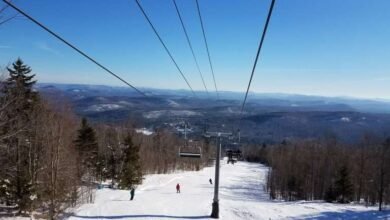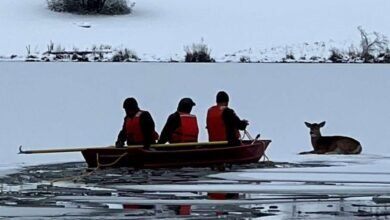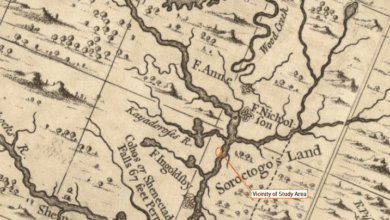The Hawkeye Plant: Kodak’s Enigmatic Landmark Languishes


 Kodak’s role in global photography is legendary. The name Hawkeye is a key part of the company’s legacy and the 759,000-square-foot “Hawkeye Plant” a totem pole of Kodak’s storied past.
Kodak’s role in global photography is legendary. The name Hawkeye is a key part of the company’s legacy and the 759,000-square-foot “Hawkeye Plant” a totem pole of Kodak’s storied past.
Set on about 10 acres on St. Paul Street near the Driving Park Bridge overlooking the Genesee River gorge in Rochester, NY, this once-bustling industrial hub has sat mostly empty since 2011.
The building has been owned and operated by Kodak since 1902. They acquired the property from the General Aristo Company. The original buildings were known as Rochester Photographic Company before the purchase.

 Meanwhile, the Boston Camera Company produced the Hawk-Eye camera, which was acquired by the Blair Camera Company in 1890.
Meanwhile, the Boston Camera Company produced the Hawk-Eye camera, which was acquired by the Blair Camera Company in 1890.
In 1907, Eastman Kodak purchased Blair, transforming it into the Blair Camera Division and moved this operation, along with several other smaller companies, into the building in 1911, naming it the “Hawk-Eye Works.” In 1913, Kodak’s lens department was moved to the site from Camera Works.
Under George Eastman’s leadership, Kodak became an international icon. Eastman’s marketing and organizational instincts propelled Kodak into global prominence. The corporation’s brand recognition was unmatched.
John Larish, a former Kodak market analyst, summed it up by saying “you could look up and see that yellow sign all over the world — no matter where you went, people depended on that for their memory recording.”
The Hawkeye Plant is architecturally significant. One local architect described it as one of the finest examples of “Factory Art Deco” in the world. Art Deco, which emerged just before World War I, flourished in the 1920s and 1930s.
This style is characterized by geometric shapes, clean lines, and decorative elements tied to the structure. The Hawkeye Plant exemplifies the Art Deco virtues of luxury, glamour, and faith in social and technological progress, embracing industrial technology in its design.

 During its peak, the Hawkeye Plant was a beacon of industrial achievement. The imposing structure- situated atop the Genesee River Gorge at Lower Falls- is akin to an American castle of industry—its presence symbolizing Kodak’s strength and influence during the height of its power.
During its peak, the Hawkeye Plant was a beacon of industrial achievement. The imposing structure- situated atop the Genesee River Gorge at Lower Falls- is akin to an American castle of industry—its presence symbolizing Kodak’s strength and influence during the height of its power.
The plant’s history is not only tied to Kodak’s commercial endeavors; it also served as a center for covert U.S. government operations. One of the most significant programs was Project Bridgehead, which began in 1955.
This program involved aerial reconnaissance and employed hundreds of Kodak workers who felt they were making an important contribution to the Cold War effort. In the 1960s, 1970s, and 1980s, Bridgehead staff knew they were working on secret projects that played a role in ending the Cold War.
Additionally, the plant was linked to the CORONA program, an initiative to capture photographic images by satellite and return the film to Earth. Launched in the late 1950s, CORONA was a critical part of U.S. military intelligence, providing essential data on Soviet military activities and capabilities.
The success of CORONA helped establish satellite surveillance as a new scientific field, with the Hawkeye Plant playing an integral role in developing and processing these images.

 Kodak also manufactured the camera for the KH-7 GAMBIT reconnaissance satellite at the Hawkeye facility. One of the most powerful cameras ever built for surveillance, it played a key role in Cold War intelligence gathering.
Kodak also manufactured the camera for the KH-7 GAMBIT reconnaissance satellite at the Hawkeye facility. One of the most powerful cameras ever built for surveillance, it played a key role in Cold War intelligence gathering.
The Hawkeye Plant’s involvement in covert operations reveals a hidden chapter in the history of photography and national security. The site’s historical significance cannot be overstated.
It represents not only Kodak’s once-thriving empire but also a pivotal period in the Cold War when the plant’s covert operations contributed to global geopolitical stability.
Unfortunately, Kodak’s story is one of decline as well as success. Once a dominant force in the photography world, Kodak struggled to adapt to the rapid rise of digital technology and the intense competition from foreign companies.

 As the company filed for bankruptcy, Kodak became emblematic of the rust-belt cities facing economic collapse. Despite the company’s reinvention and return to technological innovation, the Hawkeye Plant has not shared in that resurgence.
As the company filed for bankruptcy, Kodak became emblematic of the rust-belt cities facing economic collapse. Despite the company’s reinvention and return to technological innovation, the Hawkeye Plant has not shared in that resurgence.
Today, the Hawkeye Plant now stands languishing, as a reminder of Kodak’s past glory and its enigmatic legacy. Since 2018, the property has changed hands three times, and was up for auction again in October 2024.
It remains unclear whether the plant is for sale or if it has any future at all.
You can read a very descriptive 2003 environmental review of the Hawkeye Plant property (pdf).
Illustrations, from above: Kodak’s Hawkeye Plant from the Genesee River Gorge; one of the best-selling Art Deco design Hawkeye branded cameras; the Eastman Kodak Hawkeye Plant and Genesee Gorge; Cold War Kodak KH-7 GAMBIT film recovery operation (National Reconnaissance Office); and an abandoned Kodak’s Applied Imaging Technologies office at the Hawkeye.
Source link





